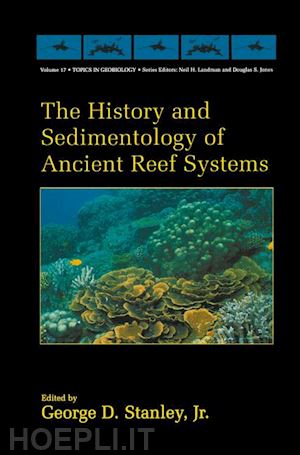1 • Introduction to Reef Ecosystems and Their Evolution.- 1. Introduction to Reefs.- 2. What Is a Reef?.- 3. Ancient Reef Ecosystems.- References.- 2 • Phanerozoic Reef Trends Based on the Paleoreef Database.- 1. Introduction.- 2. An Outline of Phanerozoic Reef Evolution.- 3. Reef Distribution Patterns.- 4. Reef Attributes through Time.- 5. Reef Evolutionary Units.- 6. Controls on Reef Evolution.- 7. Conclusions.- References.- 3 • Evolution, Radiations, and Extinctions in Proterozoic to Mid-Paleozoic Reefs.- 1. Introduction.- 2. Precambrian Prelude: Archean-Mesoproterozoic.- 3. Neoproterozoic Reefs: First Calcimicrobes (1000-544 Ma).- 4. Cambrian Reefs: Start of Metazoan Reef Components.- 5. Ordovician Radiation and Terminal Ordovician Decline.- 6. Reefs in the Silurian-Devonian: Maximal Greenhouse.- 7. Collapse of the Mid-Paleozoic Reef Ecosystem: The Frasnian-Famennian Mass Extinctions.- 8. Summary.- References.- 4 • Paleoecology of Cambrian Reef Ecosystems.- 1. Introduction.- 2. Builders, Destroyers, and Dwellers.- 3. Spatial Distribution and Temporal Evolution of Cambrian Reefs and Reef Communities.- 4. Metazoans versus Nonmetazoans.- 5. Biotic Factors versus Abiotic Factors.- 6. Ecological Succession in Cambrian Reef Ecosystems.- 7. Mass Extinction in Cambrian Reefs.- References.- 5 • Biologically Induced Carbonate Precipitation in Reefs through Time.- 1. Introduction.- 2. Biological Induction of Marine Carbonate Precipitation.- 3. Reef Framework Construction.- 4. Nonenzymatic Reef Frameworks through Time.- 5. Reef History as a Tool for Reconstructing Earth History.- 6. Paleoecological Controls on Nonenzymatic Framework Distribution.- 7. Nonenzymatic Reef Carbonates and Global Change: Summary.- 8. Conclusions.- References.- 6 • A Half Century Later: ThePermian Guadalupian Reef Complex of West Texas and Eastern New Mexico.- 1. Introduction.- 2. Early Work in the Guadalupes.- 3. The Guadalupe Reef Barrier.- 4. Changing Ideas about the Capitan Complex.- 5. More Recent Work in the Guadalupes.- 6. Late Permian Mass Extinctions and Their Effect on the Reef.- 7. Significance of the Guadalupian Reef Complex and Future Directions of Research.- References.- 7 • Triassic Reefs of the Tethys.- 1. Introduction: What Do We Know about Triassic Reefs?.- 2. Permian, Triassic, and Lower Jurassic Reef Types.- 3. Reef Biota.- 4. Reef Paleoecology.- 5. Testimonies of Tethyan Reefs.- 6. Conclusions.- References.- 8 • Jurassic Reef Ecosystems.- 1. Introduction.- 2. Jurassic Reefs.- 3. Intrajurassic Reef Development: Faunistic Evolution or Environmental Change?.- 4. Conclusions.- References.- 9 • Cretaceous Evolution of Reef Ecosystems: A Regional Synthesis of the Caribbean Tropics.- 1. Introduction.- 2. Caribbean Geologic History.- 3. History of Caribbean Reef Ecosystems.- 4. Conclusions.- References.- 10 • The Role of Framework in Modern Reefs and Its Application to Ancient Systems.- 1. Introduction.- 2. Examples from Some Modern Caribbean Reefs.- 3. Where’s the Reef?.- 4. Summary.- References.- 11 • Coral Reefs, Carbonate Sediments, Nutrients and Global Change.- 1. Introduction.- 2. Coral Reefs and Carbonate Sediments: The Basics.- 3. The Nutrient Paradox.- 4. Advantages of Algal Symbiosis.- 5. CaCO3 Production and Nutrient Gradients.- 6. Coral Reefs and Global Change.- 7. The Future of Coral Reefs.- References.











